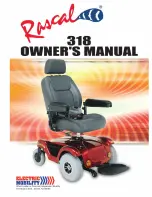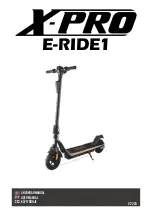
S506
26” Electric Bicycle
©2019 MONSTERPRO
13
Using Brakes
All bicycle models are equipped with a front and rear wheel braking system. Brakes are used to slow the
bicycle down. The braking systems may use different mechanics, however, the functionality is the same,
and that is to change the energy of the moving bicycle into heat energy ("friction"):
•
For disc brakes, this means pads made from a special friction material pinching
against a disc mounted to the centre of the bicycle wheel.
•
For rim type "caliper" or "noodle" brakes
or “V
-
Brake”
, this means rubber blocks
pinching the outer rim of the bicycle wheel (not the tyre).
•
For drum brakes, this means pushing sections (known as "shoes") of special
friction material against the inside of cylinder fixed to the centre of the bicycle
wheel.
The brakes are operated by the rider through levers mounted to the handlebars. The left-hand lever
operates the rear brake, the right- hand lever operates the front brake. The ability of the rider to
adequately slow and/or stop the bicycle depends largely on the skill of the rider, the surface being ridden
on and other factors such as rain, tyres, adjustment and condition of the brake parts etc
Guidelines for Using Brakes
To get the best performance and service life from the brake system, understand and apply the following
techniques:
•
In wet conditions, which reduces friction, always provide additional distance for braking and
adjust how quickly you apply the brakes.
•
When applying the brakes, particularly the front brake, use a lower pressure to start with until
you feel the brakes starting to "bite", then increase pressure as required. Do NOT over-apply the
brakes and cause the wheel to stop rotating
–
this may result in loss of control.
•
Maintain the brake friction components (pads, shoes, rubbers) in good condition and replace
when they reach the wear limit.
•
Maintain brake adjustment so that the brakes perform effectively, the levers are comfortably
positioned, and there is not excessive play in adjustable components.
•
If the brakes are not performing effectively, making abnormal noise or any part is not serviceable
or cannot be adjusted correctly, have the brakes inspected and adjusted by a bicycle mechanic or
suitably qualified person.
•
If the brake cables become frayed or otherwise damaged, have them replaced by a bicycle
mechanic or suitable qualified person.
Typical Disc Brake
Typical Rim Brake (V-
Brake)
Typical Drum Brake






































